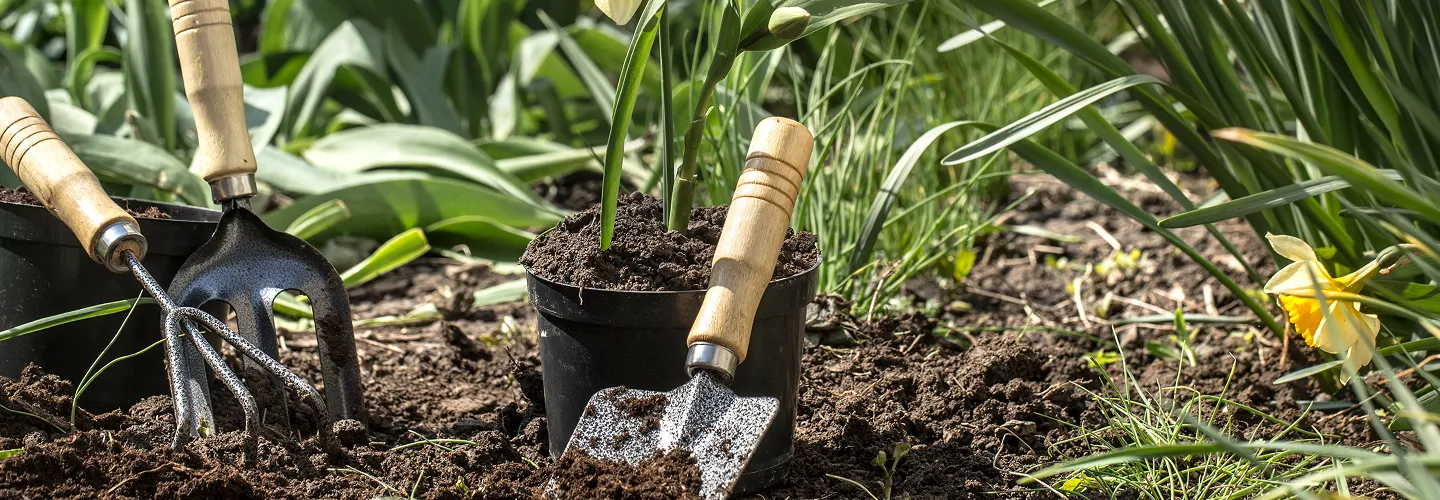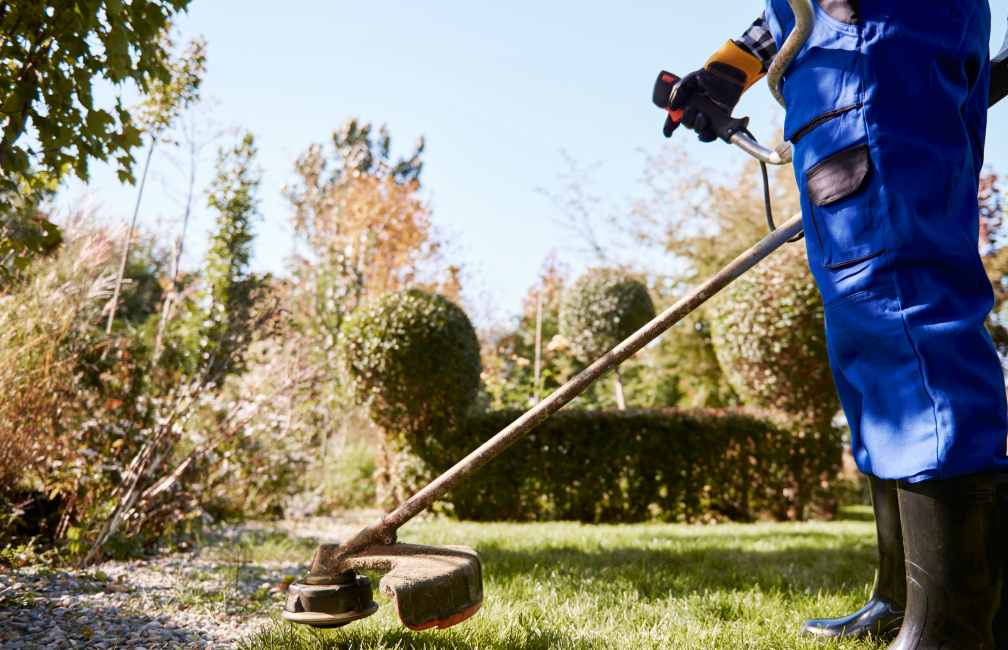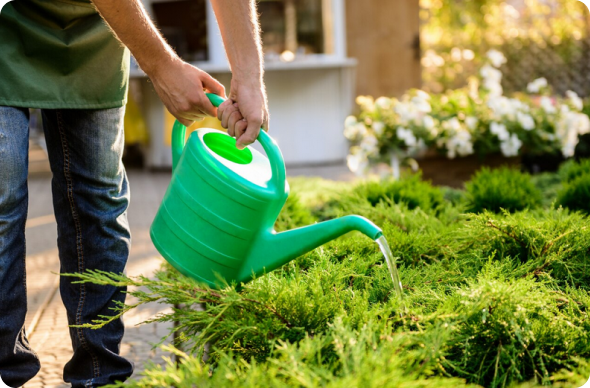
Abington Dethatching Lawn Services
Choose our dethatching lawn service for a healthier, greener yard—our experienced team removes built-up thatch to promote stronger roots, better water absorption, and a lush, vibrant lawn you’ll love.
Get a Free QuoteWhen to Schedule Dethatching Lawn in Abington, MA – Seasonal Guide
In Abington, MA, the best time to schedule lawn dethatching is typically in early spring or early fall, when grass is actively growing and can recover quickly. The town’s climate, with its cold winters and humid summers, means that dethatching too early or late in the season can stress your lawn. For neighborhoods near Island Grove Park or along Hancock Street, pay close attention to local frost dates—late frosts can delay spring dethatching, while early autumn chills may shorten the fall window.
Local environmental factors such as soil type, shade from mature trees, and the risk of summer droughts all play a role in determining the optimal timing. Areas with heavy clay soils or dense shade, like those near the Abington Public Library, may require a different approach than sunnier, well-drained properties. For more information on local weather patterns and municipal guidelines, visit the Town of Abington’s official website.
Local Factors to Consider for Dethatching Lawn in Abington
- Tree density and shade coverage, especially in established neighborhoods
- Soil composition (clay, loam, or sandy soils)
- Typical precipitation and humidity levels throughout the year
- Proximity to water features or low-lying areas prone to moisture retention
- Municipal restrictions or recommended service windows
- Terrain and slope, which can affect drainage and thatch buildup
Benefits of Dethatching Lawn in Abington

Improved Lawn Health
Enhanced Grass Growth
Increased Water Absorption
Reduced Pest and Disease Risk
Boosted Curb Appeal
Professional Landscaping Expertise

Abington Dethatching Lawn Types
Cool-Season Grasses
Warm-Season Grasses
Fescue Lawns
Kentucky Bluegrass Lawns
Bermuda Grass Lawns
Zoysia Grass Lawns
Ryegrass Lawns
Our Dethatching Lawn Process
Lawn Evaluation
Preparation and Marking
Dethatching
Cleanup and Disposal
Post-Dethatching Inspection
Why Choose Abington Landscape Services

Abington Homeowners Trust Us
Expert Lawn Maintenance
Competitive Pricing
Professional Team
Satisfaction Guarantee
Personalized Service
Reliable Scheduling
Contact Abington's Department of Public Works for Dethatched Material Disposal & Yard Waste Collection
Abington residents benefit from well-established yard debris management systems that accommodate the town's distinctive seasonal lawn maintenance cycles. Municipal waste operations provide organized collection schedules and accessible drop-off facilities specifically calibrated to process intensive dethatching volumes while supporting environmental stewardship throughout this historic South Shore township.
Abington Department of Public Works
500 Gliniewicz Way, Abington, MA 02351
Phone: (781) 982-2100
Official Website: Abington Department of Public Works
Effective organic material processing requires strict compliance with municipal preparation standards that maximize composting efficiency while supporting regional sustainability initiatives:
- Contain yard debris exclusively in certified biodegradable paper bags or approved containers; synthetic materials contaminate municipal composting operations and violate state organic waste processing regulations
- Remove contaminating substances including stones, soil aggregates, construction materials, and foreign objects that compromise municipal processing machinery
- Follow published weight limitations and container specifications for both residential collection routes and Transfer Station operations
- Monitor municipal communications for schedule adjustments during weather events and peak maintenance periods
- Arrange materials to preserve emergency vehicle access and prevent storm drainage infrastructure obstruction
Understanding Thatch Buildup in Abington's Glacial Till Uplands & Island Grove Basin Conditions
Abington's distinctive geological foundation creates specialized growing environments that dramatically influence thatch development across this historic South Shore community. USDA Web Soil Survey mapping identifies complex formations including Paxton and Charlton fine sandy loam on glacial till uplands, Scituate fine sandy loam on moderate slopes, Ridgebury fine sandy loam in poorly drained kettle areas, and Whitman fine sandy loam near Island Grove Pond and seasonal wetland margins throughout this established township.
University of Massachusetts Extension Center for Agriculture, Food and the Environment
161 Holdsworth Way, Amherst, MA 01003
Phone: (413) 545-2717
Official Website: University of Massachusetts Extension
Island Grove Pond vicinity generates distinctive microclimate variations that complicate thatch management throughout Abington's residential areas. Glacial till substrates often develop compacted conditions through suburban development activities, restricting oxygen circulation essential for beneficial decomposition organisms. Kettle depression areas near Island Grove experience seasonal water table fluctuations that create alternating aerobic and anaerobic conditions affecting natural organic matter breakdown processes.
Properties where thatch accumulation exceeds the critical 0.5-inch threshold develop cascading problems including impaired water infiltration, restricted nutrient availability, and increased vulnerability to disease pressures common in South Shore environments. Historic town development patterns create diverse microclimates that complicate natural decomposition throughout seasonal cycles.
Key practices for managing thatch in Abington's conditions include:
- Timing operations during optimal growth periods in late spring or early autumn when Island Grove basin humidity supports rapid turf recovery
- Coordinating cultivation services addressing compaction from historical town development and contemporary suburban activities
- Selecting grass cultivars adapted to South Shore conditions and variable moisture patterns from kettle depression influences
- Implementing balanced nutrition programs preventing excessive growth while maintaining suburban landscape standards
- Establishing immediate ground coverage following dethatching using varieties suited to Abington's diverse glacial and basin terrain
Reference: USDA Web Soil Survey
Abington Conservation Commission Requirements for Dethatching Near Wetlands & Protected Areas
Abington's integration of natural resources within historic town development necessitates comprehensive environmental planning for lawn maintenance activities throughout this South Shore community. The Massachusetts Wetlands Protection Act governs work within buffer zones extending 100 feet from wetland boundaries and 200 feet from waterways, affecting properties near Island Grove Pond, Beaver Brook, Shumatuscacant River, and numerous kettle pond systems that characterize much of the township's landscape.
Abington Conservation Commission
500 Gliniewicz Way, Abington, MA 02351
Phone: (781) 982-2100
Official Website: Abington Conservation Commission
Wildlife habitat protection requires specialized attention due to concentrated ecological value within town conservation areas and historic landscape features. Seasonal nesting restrictions from April through July affect properties adjacent to Ames Nowell State Park, Island Grove recreational areas, and residential landscapes providing essential habitat connections throughout South Shore watershed systems. Properties near historic mill pond sites or educational facilities with preserved natural features must implement enhanced erosion control preventing sediment migration into sensitive aquatic ecosystems.
Major dethatching operations within regulated buffer zones typically require environmental review through Request for Determination of Applicability or Notice of Intent procedures. Manual techniques or specialized low-impact equipment are recommended in sensitive Island Grove and kettle pond areas to minimize soil disturbance while maintaining compliance with historic town watershed protection requirements.
Abington's Implementation of Massachusetts Organic Waste Regulations for Dethatched Material
State legislation under Massachusetts General Law Chapter 111, Section 150A mandates organic waste diversion from household refuse systems, creating opportunities for innovative historic town composting programs serving Abington's diverse residential development patterns. The town has developed comprehensive organic material management systems addressing unique challenges of historic South Shore development while supporting community-wide environmental sustainability objectives.
Massachusetts Department of Environmental Protection
One Winter Street, Boston, MA 02108
Phone: (617) 292-5500
Official Website: Massachusetts Department of Environmental Protection
Massachusetts Department of Agricultural Resources
251 Causeway Street, Suite 500, Boston, MA 02114
Phone: (617) 626-1700
Official Website: Massachusetts Department of Agricultural Resources
Historic town composting initiatives provide excellent organic waste processing opportunities where property characteristics support appropriate site selection within Abington's established neighborhoods. Residential composting operations benefit from South Shore lot sizes while requiring adequate setbacks from Island Grove Pond systems, Beaver Brook tributaries, and kettle pond margins throughout this historic community.
Municipal collection services accommodate South Shore town access patterns through coordinated scheduling recognizing recreational area demands while maintaining Massachusetts General Law Chapter 111, Section 150A compliance through advanced processing partnerships. Technical guidance from the Massachusetts Department of Agricultural Resources supports sustainable organic waste practices complementing historic town landscape management and environmental stewardship objectives.
Post-Dethatching Stormwater Management in Compliance with Abington's MS4 Program
Abington's Municipal Separate Storm Sewer System obligations emphasize comprehensive watershed protection throughout the town's historic and residential drainage network. National Pollutant Discharge Elimination System standards mandate rigorous pollution prevention during soil-disturbing activities, with enhanced requirements for historic town areas and residential developments contributing to regional waterway protection within the larger South Shore watershed system.
U.S. Environmental Protection Agency, Region 1
5 Post Office Square, Suite 100, Boston, MA 02109
Phone: (617) 918-1111
Official Website: U.S. Environmental Protection Agency, Region 1
Historic town weather patterns require sophisticated monitoring before conducting dethatching operations, with particular attention to South Shore storm development and Island Grove basin effects. Property owners should consult National Weather Service Boston forecasts and suspend operations when precipitation threatens within 24 hours. Post-dethatching stabilization requirements include:
- Immediate establishment of protective ground coverage within 24 hours using seed mixtures adapted to historic town conditions and South Shore growing environments
- Strategic nutrient management avoiding excess applications that contribute to historic town runoff and regional water quality impairment throughout kettle pond and stream systems
- Precision irrigation planning supporting establishment while preventing runoff into Abington's historic town storm drainage infrastructure
- Coordinated soil enhancement addressing compaction from historic town development activities and contemporary landscape management
- Installation of temporary erosion barriers on slopes and areas adjacent to recreational lands vulnerable to storm-related soil displacement
These comprehensive measures ensure Clean Water Act and EPA NPDES compliance while supporting turf recovery in Abington's challenging historic town environment.
What Neighborhoods Do We Serve Throughout Abington, MA?
Abington's residential districts present diverse thatch management challenges reflecting varied Island Grove proximity, historic development patterns, and conservation interface conditions throughout this established South Shore community.
Abington Center Historic District encompasses traditional civic areas with mature landscapes and potentially modified soils from centuries of town development. Proximity to municipal facilities and historic Island Grove recreational areas creates unique microclimate conditions while established infrastructure often requires specialized manual techniques and equipment coordination for effective maintenance throughout this prestigious town center.
Island Grove Pond Recreation Zone includes properties with direct pond access experiencing distinctive growing conditions from water proximity and intensive recreational use patterns. Enhanced humidity from pond influence affects decomposition rates while strict watershed protection requirements demand careful nutrient management and erosion prevention during maintenance activities throughout this popular community recreation area.
North Abington Residential Neighborhoods feature established suburban development with engineered soils and contemporary drainage systems. Construction-related compaction remains prevalent throughout these areas, requiring combined dethatching and aeration services while coordinating with underground utility networks and established landscape systems throughout this suburban transition zone.
South Abington Rural Interface District encompasses scattered development transitioning between suburban and rural characteristics with diverse soil types and drainage patterns. Former agricultural influences may demonstrate enhanced fertility accelerating grass growth while larger lot sizes provide operational flexibility for specialized equipment access and soil management throughout this transitional area.
Beaver Brook Conservation Corridor includes properties along tributary systems with varied soil conditions and seasonal moisture characteristics. Properties experience diverse drainage patterns and environmental oversight requirements from stream corridor proximity and watershed protection considerations throughout this ecologically significant waterway system.
Ames Nowell State Park Vicinity encompasses residential development near this significant state conservation area with unique environmental conditions from park proximity and recreational interface patterns. Wildlife corridor considerations affect maintenance timing while state park management activities require coordination during peak recreational seasons throughout this conservation interface zone.
Shumatuscacant River Valley Properties feature development along this important waterway with challenging growing conditions from river influence and seasonal flooding potential. Properties experience distinctive moisture patterns while serving as critical habitat corridors connecting town development with regional conservation networks throughout this river valley ecosystem.
Abington Municipal Bylaws for Landscaping Operations & Equipment Use
Municipal ordinances governing landscaping operations in Abington establish comprehensive standards balancing professional service access with historic town neighborhood protection throughout this South Shore community. These regulations reflect the town's commitment to environmental stewardship while ensuring access to essential lawn care services within complex historic town infrastructure and recreational area management demands.
Abington Building Department
500 Gliniewicz Way, Abington, MA 02351
Phone: (781) 982-2100
Official Website: Abington Building Department
Abington Board of Health
500 Gliniewicz Way, Abington, MA 02351
Phone: (781) 982-2100
Official Website: Abington Board of Health
Noise control regulations establish specific operational hours reflecting historic town residential character while accommodating recreational facility schedules throughout this established South Shore community. Commercial service providers must maintain comprehensive insurance coverage appropriate for historic town property values while demonstrating environmental compliance capabilities for sensitive watershed protection throughout Island Grove and state park environments.
Equipment operation standards address unique historic town challenges including navigation of established infrastructure systems, protection of extensive underground utilities, and coordination with recreational area management schedules. Service providers must demonstrate competency in South Shore soil management while maintaining effective thatch removal capabilities in diverse substrates affected by historic town development and contemporary recreational demands.
Substantial dethatching projects near historic sites, state park areas, or sensitive environmental features typically require coordination with multiple municipal departments ensuring compliance with historic town environmental protection standards. Professional operators must maintain current training in South Shore community best management practices while ensuring successful turf establishment in Abington's complex historic town environment with its integrated recreational requirements and sophisticated watershed protection demands.